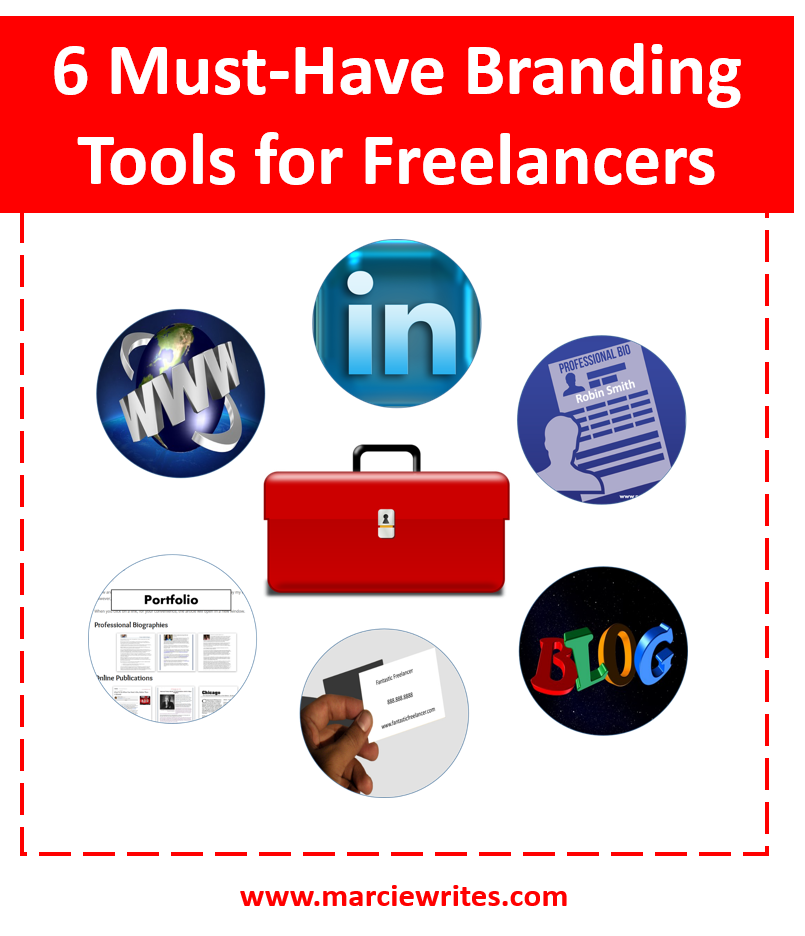In the past, people equated branding with large companies that had stamped their DNA in the minds and hearts of consumers through words (names, slogans, taglines and jingles); images (logos, colors and mascots); and perceptions (feelings and experiences).
Today everyone – executives, employees, business owners, freelancers, and even job seekers – are advised to brand themselves. But what does that really mean?
What is Branding?
Entrepreneur.com defines branding as “The marketing practice of creating a name, symbol or design that identifies and differentiates a product from other products.”
Jerry McLaughlin shares What is a Brand, Anyway? in Forbes.
Benefits of Branding
Although there are many benefits of branding, here are three that will keep you top of mind: being memorable, distinction and clarity.
When you see a swish, yellow arches or an apple, you immediately recognize these companies because
- Their images are distinct.
- They are memorable, not just because of images, but because of the jingles, slogans and taglines that accompany them.
- The companies’ names have become synonymous with quality and reliability based on customer experiences.
- They are clear in their mission and whom they serve.
Branding Tools for Freelancers
While there are many thing you can do to build your brand, here are six must-have branding tools all for freelancers
Website
When you introduce yourself at networking events, one of the first questions they ask is, “Do you have a website?” If you don’t have one or are thinking about creating one, here’s the main reason why you should have a website: it’s your online home that you own.
Because you own it, you can use and design it any way you want. You can post your portfolio; create a blog; or include an online store. Make it easy for people to find and contact you.
LinkedIn Profile
If you don’t have a website, LinkedIn is the next best branding tool. With 467 million users in 200 countries, this is the largest professional network online. In addition to sharing your work history, you can post work samples in different media formats; join and contribute to groups; and publish articles to increase your credibility and visibility.
Professional bio
A professional bio is your resume in story format. You don’t have to document your entire work history, just relevant experiences. It can be formal or informal, depending on the purpose.
Portfolio
Proudly display your successes, clients served, industries worked and testimonials in your portfolio. When possible, show the before and after of the project. Publish your portfolio on your website and LinkedIn so you can send links of your work to prospects upon request.
Business cards
Contrary to what’s being said, business cards are not being replaced by technology. In fact, they work in conjunction with mobile apps, online software and social networks.
To be memorable, have a unique card design, tagline or logo; by using an easy-to-read font type and size; and include all the ways people can reach you.
Blogs
Blogs are multipurpose tools you can use to:
- Position yourself as an expert and resource;
- Market and promote yourself, products and services;
- Develop products and services;
- Educate your audience through articles, videos, webinars and online courses; and
- Build an online community around your business, blog topics, products and services.
There’s a caveat to blogging: you have to post consistently. Unlike the other branding tools where you create once and update sometimes, blogs require work.
A Final Note About Branding Tools
There is no right or wrong way to create any of them. Make sure your look, feel and tone are consistent; include your contact information on each of them; and always link back to your website.
What About You?
Which of these tools do you have in branding tool box? Which attracts the most business for you?
Let us know in the comment box below.
Image credits: pixabay
